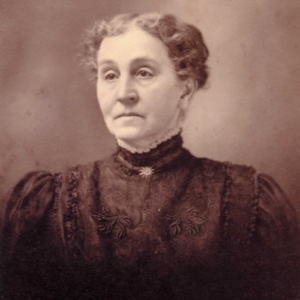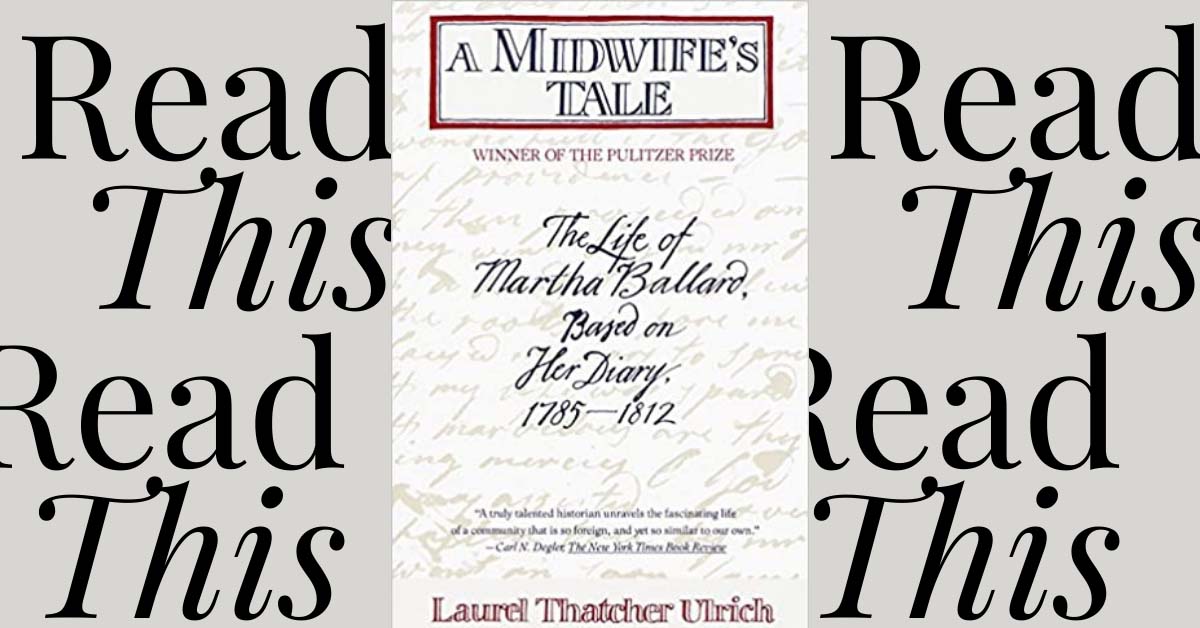“From the storm lashed decks of the Mayflower… to the present hour; woman has stood like a rock for the welfare and the glory of the history of the country, and one might well add… unwritten, unrewarded, and almost unrecognized.”
Clara Barton- courageous founder of the Red Cross- a passionate pioneer whose relentlessness brought enough achievements to fill a dozen lifetimes. And she came by it honestly, bolstered by the path of her ancestors.
In the background of her bloodline? One quiet, but no less hardworking Great-Aunt Martha Ballard.
And yet, A Midwife’s Tale: The Life of Martha Ballard, Based on Her Diary 1785-1812, shows us “quiet” doesn’t equate to “dull”. Laurel Thatcher Ulrich’s impressively exhaustive research fleshes out Martha’s reticent prose into a deep look into a first-hand account of a working woman’s life in late 18th century America.
Martha’s diary is unassuming. It’s written during her years as a middle aged (and eventually elderly) skilled social practitioner. Martha wasn’t set out to create cultural change. Her diary depicts a prolific, determined, and steadfast working mother. Much like Clara Barton, she laid the foundation for her descendants.
A Midwife’s Tale comes from 11 months of diary entries from the years of 1785-1812. Ulrich expertly deconstructs, explains, and makes connections with other historical records. She weaves a rich narrative depicting life in the early years of rural Maine.
I found A Midwife’s Tale writing difficult to decipher at first and appreciated Ulrich’s commentary. Martha uses her own shorthand, inventive spelling, and sometimes taciturn descriptions as she writes for her own personal record. But by the end, I was surprised how easily I had adjusted to Martha’s way of writing. I was also surprised with how much I could comprehend on my own.
Learning from Martha Ballard
 In turn both foreign and familiar, the lives of the women in Martha’s world are enthralling. Her daughters, neighbors, and patients (the former often making up much of the latter) are women living in a different period, but still, at heart, women.
In turn both foreign and familiar, the lives of the women in Martha’s world are enthralling. Her daughters, neighbors, and patients (the former often making up much of the latter) are women living in a different period, but still, at heart, women.
Unwed mothers, the after effects of a harrowing murder-suicide, work-home life balance, ungrateful adult children, lonliness during her years of decline, simmering political and religious unease …
Sound familiar?
Despite all our advances, I found myself identifying with the issues the women of Maine in the late 1700’s faced. Sure, I’ve never fallen off a horse in the middle of the night or climbed a frozen river bank to make it in time to catch a baby…but I know the struggle to keep up with laundry and kids while managing a career. Martha didn’t have an iphone or a Facebook. But she did plenty of worrying about her grown children’s affairs.
The importance of connections within our communities, reliance on and interdependence of family, and ever evolving political and religious landscapes exist today.
Martha passed on quietly during the late Spring of her 77th year. This was after delivering an astonishing 816 births and having treated countless neighbors, relatives, and friends as a traditional healer. Thankfully her diary survived as a connection with the otherwise unspoken and unseen lives of early American farm life.
I’ll admit: I shed a few tears as I laid down A Midwife’s Tale.
Martha was flesh and blood. She lived with a tenacious and indomitable spirit. Anyone who picks up this book will find a familiar, sisterly connection with this incredible healer from Hallowell, Maine.
Interested in reading A Midwife’s Tale? You can pick up a copy here.




